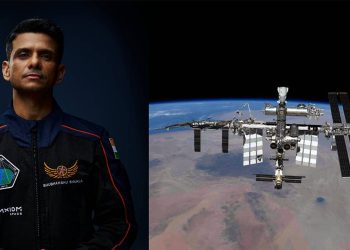WASHINGTON: US space agency NASA has told Elon Musk’s SpaceX to halt work under a contract it won to develop a lunar spacecraft, pending the outcome of challenges by rival bidders.
NASA’s decision means SpaceX has to stop any work specifically related to the moon program contract until the US Government Accountability Office makes a ruling, expected August 4 at the latest.
Earlier this month, NASA awarded SpaceX the lunar contract over billionaire Jeff Bezos’ Blue Origin and defense contractor Dynetics. The high-profile project aims to put humans back on the moon for the first time since 1972.
Blue Origin filed a protest with the GAO, arguing among other things that NASA gave SpaceX the chance to revise its bid but did not give that chance to them
READ MORE: NASA chooses SpaceX to take humans back to Moon
Blue Origin also argues the decision extends SpaceX’s “monopolistic” control in space exploration. The GAO confirmed that Dynetics has also challenged the NASA contract award to SpaceX.
“Pursuant to the GAO protests, NASA instructed SpaceX that progress on the HLS (human landing system) contract has been suspended until GAO resolves all outstanding litigation related to this procurement,” the agency said.
NASA had selected SpaceX to land the first astronauts on the surface of the Moon since 1972, in a huge victory for Elon Musk’s company. The contract, worth $2.9 billion, involves the prototype Starship spacecraft that is being tested at SpaceX’s south Texas facility.
SpaceX beats out Jeff Bezos’ Blue Origin and defense contractor Dynetics to be the sole provider for the system.
READ MORE: SpaceX rocket launches 4 astronauts on NASA mission to space station
Last year, SpaceX became the first private firm to successfully send a crew to the International Space Station, restoring American capacity to accomplish the feat for the first time since the Shuttle program ended.
SpaceX has plans to combine the Starship spaceship with its own Super Heavy rocket, to make a combined vessel that will tower 394 feet (120 meters) tall and be the most powerful launch vehicle ever deployed.
Humans last stepped foot on the Moon in 1972 during the Apollo program. NASA wants to go back and establish a sustainable presence, complete with a lunar space station, in order to test new technologies that will pave the way for a crewed mission to Mars.




































